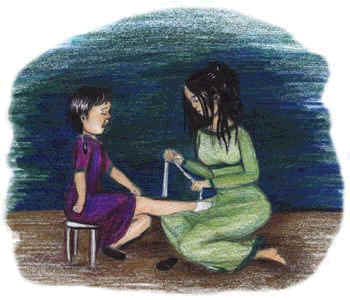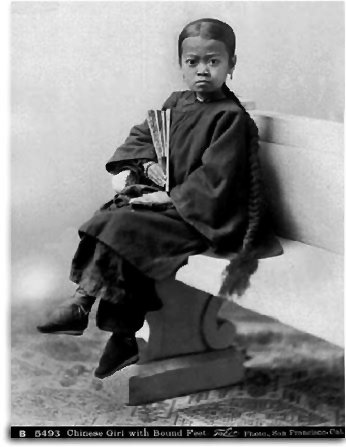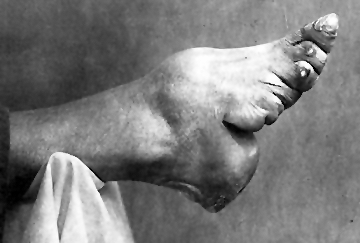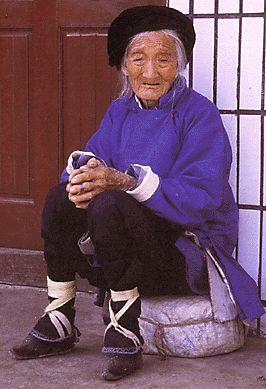 |
|
*Beauty* By: Gia Chinese Footbinding Throughout history, both men and women have gone through great lengths in order to achieve
beauty. At times great pain was suffered, in order to achieve what society perceived to be beautiful. In ancient  Though there are several myths about the roots of foot binding,
no one is certain how the practice of foot binding began. It began in the
late T’ang Dynasty (618-906) and gradually spread through the upper class during the Song Dynasty (960-1297). It lasted
approximately one thousand years. In
the beginning, only the court dancers practiced this custom, it was later followed by the women of the court. 

 Some girls made it through their youth without having any medical problems; yet the time when most women had
health problems due to foot binding was in their later years. The women who had their feet bound were more likely to fall,
less able to squat and less able to rise from a sitting position in their older years. The combination of the lower hip bone
density, along with the fact women with bound feet were more likely to fall, put these women at an extremely high risk for
hip fractures (Ling 1,2). Overall, foot binding had its beauty, yet the consequences were very severe  Foot binding sounds so terrible but it did not stay popular forever. In the mid-1600s the Manchus took over
the Yuan dynasty to create the Qing Empire. The Manchus were strongly against foot binding. The Qing Empire began to charge
people for having daughters with bound feet and prohibiting it in areas they could control. The practiced nevertheless continued.
It had become so much part of the Chinese culture and famiy traditions, that the government could not stop it. The Chinese
continued to see foot binding as a beautiful act although it was illegal ( Interesting Facts · Men in · A mother was responsible for making sure her future daughter-in-law had her feet binded. · If the mother of the man lifted up the woman’s dress and discovered (Clowns feet) she would
not allow her son to speak to that woman again. This was considered one of the
most embarrassing things that could happen to a woman. · It was believed to make a woman more desirable to men;
therefore she could move up in status. · It was acceptable for a woman’s foot to be the length of this bar.  |
|
|
 |
|
|